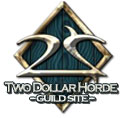
How to Lead & Win in Alterac Valley:
A Strategy Guide
Part 2: Basic Principles
Flag-N’-Graveyard GamesAlterac Valley is similar to a number of other “Flag-N’-Graveyard” games at a high level, especially to CTF in first person shooters. The mechanics of having players respawn at graveyards on the map after they die creates a number of predictable battlefield behaviors.
In the absence of a better plan, the default behavior of 99% of players will be to run from their spawn point towards some sort of objective, and stop to fight any enemies they encounter along the way. When they die, they rinse and repeat this scenario. There will always be players on the enemy team that behave in this way as well. Let’s assume for a moment that the entirety of both teams choose this strategy.
Assumptions:
Since the players are all of equal skill, any time a group of players is forced to fight a larger group, the larger group will win. Think about what happens. After several minutes, each side will look like a “String” of players. The start of the “String” is the friendly spawn point. The end of the “String” is a point in the middle of the field somewhere. This “Conflict Point” in the middle will start at the 50% point between the two spawns, but will waver back and forth depending on which side has a numerical advantage at the conflict point.
As one side beats the other back towards their spawn point, the losing side begins to receive reinforcements faster and faster due to the reduced walking time. This will eventually cause the see saw to tip in the other direction, with the conflict moving back towards the middle. Attacker becomes Defender. Endless stalemate ensues. As you advance towards an enemy spawn point, the battle will become more and more difficult. It is impossible to take an enemy spawn point using this brute force approach unless your team is significantly more skilled than the opponent at an individual level.